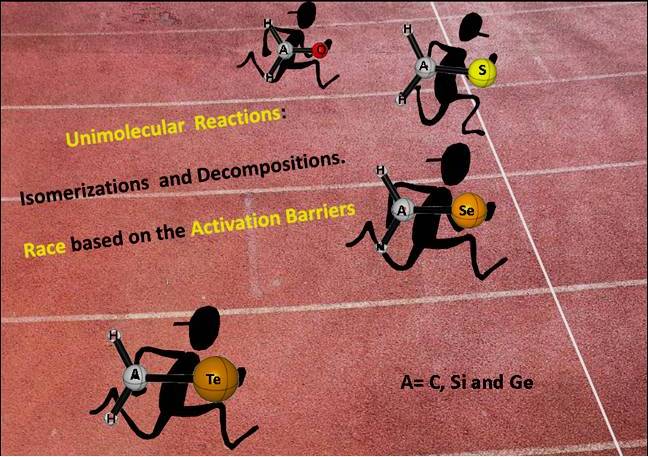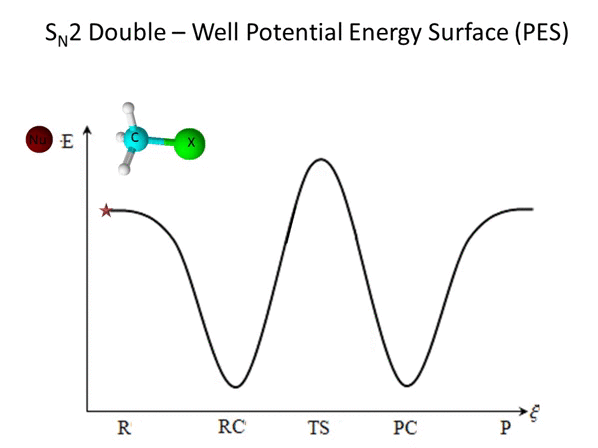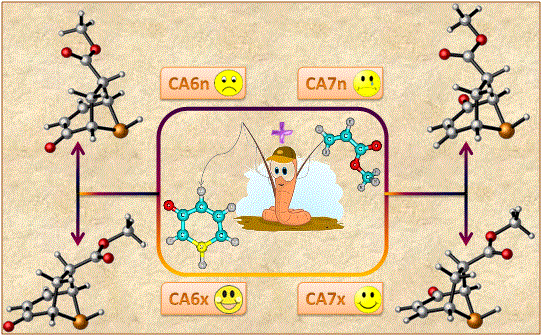|
Dr Raj Sreeruttun completed his PhD degree in 2008 with Prof Henry Fritz Schaefer III as the co-supervisor. The title of his PhD thesis is "Quantum chemical investigations of molecular and electronic properties of substituted ethynyl (•C2R) species". |
|
Dr Ashwini Bundhun joined the group in August 2008 and completed her PhD in May 2013. Her research was based on the studies of novel germylene species in order to have more understanding of the structures and electron affinity. She also investigated the reactions of the germylene species with germane and computed the rate constants. |
|
Dr Lydia Rhyman joined the group in August 2009 and completed her PhD in October 2013. Her research work was based on elucidation on reaction mechanism mainly for cycloaddition reactions. Prof John Joule and Assoc Prof Sabina Jhaumeer-Laulloo were the other co-supervisors. The title of her PhD thesis is "Theoretical study of cycloaddition reactions". She is currently working as a post-doc in the group. |
|
Dr Naziah Jaufeerally joined the group in December 2009 and she is co-supervised by Prof Henry Fritz Schaefer III. Her research is based on the theoretical investigation of the structural and energetic aspects of telluro-ketones. To date, telluro-ketones [H2A=Te; A = C, Si and Ge] have not yet been synthesized although there are reports for the existence of their complexes. Therefore, this research work endeavors to assist experimental studies on telluro-ketones in the future. The existence of telluro-ketones should no longer be a myth but a reality! |
|
Dr Neelum Seeburrun joined the Computational Chemistry group in July 2010 and she is co-supervised by Prof Edet. F. Archibong. Her research is focused on a systematic investigation on neutral and anionic gallium chalcogens using Density Functional Theory (DFT) and ab initio methods. Group III-VI clusters stimulate strong impetus for a series of fascinating experimental and theoretical studies and they are widely used in the design of materials and opto-electronic nanodevices. We are particularly interested at providing accurate theoretical data on the equilibrium structures, geometrical parameters, vibrational features, electron affinities and estimate the dissociation energy of the species studied. We hope that this research shed more light on gallium chalcogens as well as to help experimentalists to interpret their results. |
|
Dr Hanusha Bhakhoa joined the Computational Chemistry group in October 2013 and she is co-supervised by Prof John M Dyke. Her research is based on the post-HF and DFT studies of aza-macrocycles complexes of the metal azides, M(N3)n. The aza-macrocycles are prototypical “hosts” accommodating the “guest” species, of which the metal azides are exemplary. The metal azides, M(N3)n being potential high-energy-density materials, are highly shock sensitive and hence, they are postulated to be stabilized by the aza-macrocycles; whereby the metal centre attached itself to the exposed nitrogen atoms and fits like a key in a lock. |
|
Dr Jalal Z. A. Laloo joined the Computational Chemistry group in October 2013 and he is co-supervised by Prof Matthias Bickelhaupt. His research study is based on SN2 reactions. In order to understand these reactions in complex organic, inorganic and biological reactions, simple molecules are used for modelling. The archetypal reaction, “Simple nucleophile, Nu(-) + CH3Cl → CH3Nu + Cl-, with Nu(-) = F-, OH-, NH2- and CH3-”, is studied, theoretically, in the gas phase, THF as the solvent and with discrete DME molecule(s) for frontside and backside attack, as well as, with organometallic nucleophiles. The aim is to determine activation strain energies to uncover trends in SN2 reactions along nucleophiles, from simple nucleophiles to their organometallic counterpart and from gas phase to solution. Consequently, pertinent insights will be obtained which are often difficult, if not impossible, to achieve experimentally, hence, enriching the understanding, at molecular level, of SN2 reactions in complex systems.
|
|
Dr Dhanashree Hallooman joined the computational group in May 2015. Her research is based on theoretical study of the mechanism of cycloaddition reaction involving phosphorus heterocycles to examine more complex [3+2] reaction pathways. Her work targets the study of phosphorinium-3-olates, 1,4-diphosphorinium-3-olates and different substituents with methyl acrylate and methyl methacrylate to overcome the gap between nitrogen and phosphorus heterocycles. It is worth pointing out that phosphorus containing heterocycles have wide application in the industry such as catalysts, drugs and dyes. Furthermore, this study can serve as stimuli to synthetic chemists.
|
|
Dr Nandini Savoo joined the Computational Chemistry group in July 2017. Her research involves the study of the backside and frontside pathways of the anionic and ion-pair reactions at the molecular level. The reactions MNH2 + CH3Cl and MCH3 + CH3Cl (M is Li, Na, K, MgCl) are investigated using the OLYP/6-31++G(d,p) method in the gas phase. The activation strain model (ASM) of chemical reactivity is employed to understand the mechanisms in terms of strain and interaction of the fragments. Bulk solvation with THF and microsolvation with DME are also studied to compare the changes from gas phase to solution. The results are compared with previous SN2 research by the Computational Chemistry group in an attempt to understand the effect of nucleophilicity of organometallic nucleophiles on SN2 reactions.  |
- Hits: 2161






